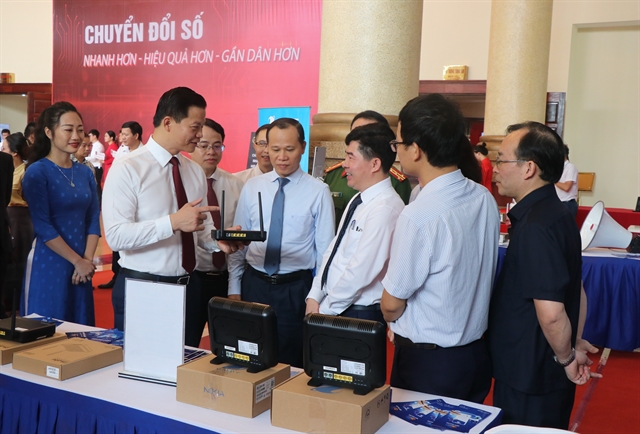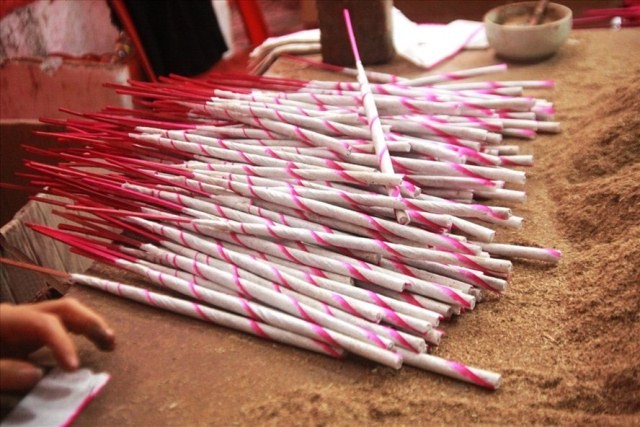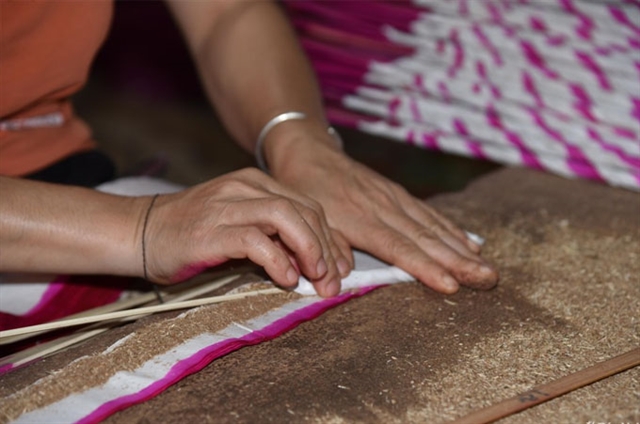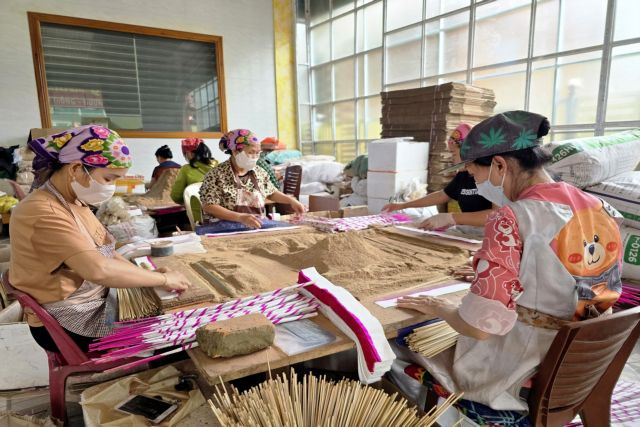 Life & Style
Life & Style

NGHỆ AN -- Burning incense during Tết (Lunar New Year holiday) is a deeply rooted tradition in Vietnamese culture, symbolising respect for ancestors and spiritual connections.
Among the renowned types of incense, Quỳ Châu incense from Nghệ An Province’s western region stands out. Known for its subtle fragrance and meticulous craftsmanship, this production thrives year-round, but reaches its peak during the festive season.
 |
| Quỳ Châu incense products are now distributed nationwide and well-received by consumers. — Photos langngheviet.com.vn |
From additional occupation to main source of income
In Quỳ Châu District, incense production has evolved from a supplementary activity to a primary livelihood for many residents and Tân Lạc Town is the hub of this industry.
Walking through its streets in the lead-up to Tết, one can sense the distinctive aroma of incense blending with the rhythmic sounds of bustling workshops.
Trần Thị Loan, a prominent incense producer in Tân Lạc, runs a workshop employing around 20 workers a day. She explains that the primary ingredient for Quỳ Châu incense is the root of hương bài grass, a plant native to Nghệ An’s mountains.
After cleaning, drying and grinding the roots into a fine powder, they are mixed with other natural ingredients such as star anise, cardamom, cinnamon, sugarcane residue and secret herbs in a recipe unique to each producer. The result is a rustic incense stick that burns evenly, releasing a gentle and soothing fragrance.
To ensure quality, producers begin preparing bamboo sticks during the sunny summer months, soaking them and drying the stalks with an attention to detail reflecting the pride and care artisans invest in their craft.
Crafting a better future
 |
| The crucial task of rolling incense remains manual to maintain quality. |
The economic impact of incense production is significant.
Hà Thị Tuyết, a worker at the Hà Loan incense workshop, said that she rolls up to 3,000 sticks daily, earning about VNĐ350,000 (US$14). Meanwhile, Nguyễn Thị Vân, owner of Bình Minh workshop, highlights the balance between tradition and innovation. Although some processes are now mechanised to save time, the crucial task of rolling incense remains by hand in order to maintain quality. For Vân, preserving the reputation of Quỳ Châu incense is a non-negotiable priority.
According to Võ Thái Tịnh, Chairman of Tân Lạc Town’s People’s Committee, traditional incense faces competition from modern varieties, such as curled or ash-retaining incense. However, by adhering to time-honoured methods and recipes, Quỳ Châu incense has maintained its position in the market.
Extending the brand’s reach
Beyond Tân Lạc, other villages in Quỳ Châu are equally active in incense production. During peak seasons, the district’s roads are busy with vehicles transporting incense. What sets Quỳ Châu incense apart is its commitment to using only natural ingredients, avoiding chemicals entirely. This dedication has earned the product growing popularity, particularly during Tết.
Recognising the economic value of this traditional industry, Quỳ Châu District has identified incense as one of its key products, creating stable jobs for many locals. Currently, two locations, Hạnh Tiến hamlet in Châu Hạnh Commune, and Tân Lạc Town are officially recognised as traditional craft villages. Efforts are underway to expand the trade and enable more households to thrive.
Planning for sustainable growth
 |
| BURNING THE MIDNIGHT INCENSE: Quỳ Châu workers reach peak production during the festive season. — VNA/VNS Photo Văn Tý |
Head of Quỳ Châu’s economic and infrastructure department, Nguyễn Tiến Hùng said that local incense products are now distributed nationwide and well-received by consumers. For this Tết, the district’s workshops aim to supply over 99 million sticks to the market. To ensure long-term sustainability, the district is focusing on building raw material zones, with a goal of sourcing 70 per cent of ingredients locally within five years.
As Quỳ Châu continues to refine its craft and expand its market, the incense industry serves as a testament to how traditional values can harmonise with economic progress, enriching both livelihoods and cultural heritage. -- VNS